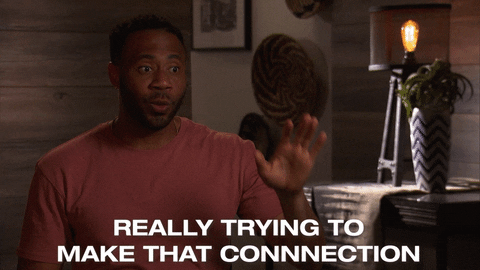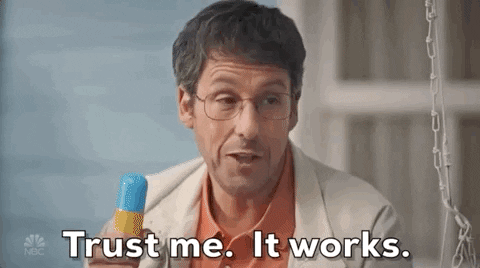10 Steps to Figure Out Your Personal Brand
Remember that first day at your job? You were pumped, right? Full of energy and ready to take on the world. But now, years later, maybe that excitement has faded. The daily routine feels a bit...meh. You're starting to wonder, "Is this all there is?"

If you're nodding your head, you're not the only one. It's common to hit a wall in your career. You start to feel stuck, unappreciated, or like you're just another cog in the machine.
But guess what? It doesn't have to be that way.
This is where your personal brand comes in. It's basically your professional reputation, what people think of when they hear your name. A strong personal brand can open up new doors, boost your confidence, and help you get to where you want to be in your career.

Think of it like a career glow-up. It's time to show the world what you're really made of.
Ready to get started? Let's do this...
Step 1: Discover the Foundation of Your Brand
Before you can build a brand, you need a deep understanding of your unique strengths, values, and aspirations. This self-discovery phase is crucial for crafting an authentic and compelling personal brand.

- Identify your top skills and accomplishments. Think about what you're naturally good at and what you've achieved in your career. For example, if you're a software developer, your top skills might include coding in specific languages, problem-solving, and collaborating with cross-functional teams. Your accomplishments might be launching a successful app or streamlining a development process.
- Pinpoint your core values. What's important to you in your work and life? Are you passionate about innovation, sustainability, or social impact? Understanding your values will help you align your career with your passions and make choices that feel authentic to you.
- Define your career aspirations. Where do you see yourself in the next 5-10 years? Do you want to climb the corporate ladder, switch industries, or start your own business? Setting clear goals will give you direction and help you make strategic career choices.
Step 2: Tell Your Story
Once you know what makes you unique, it's time to create a clear and concise message that captures the essence of your brand.

- Develop your elevator pitch: This is a brief, 30-second introduction that highlights your key skills, experience, and goals. Think of it as your professional "hook" – what you'd say to capture someone's attention in a networking situation or job interview. Focus on showcasing your value and what sets you apart.
- Identify your key messages: What are the 3-5 core points you want people to remember about you and your brand? These messages should be clear, concise, and consistent across all your communication channels.
Step 3: Establish Your Visual Identity
Your visual identity is an important part of your brand. It's how you present yourself to the world and should reflect your personality and professionalism.

- Choose a professional color scheme and font. Select colors and fonts that reflect your personality and industry. Aim for a clean, polished look that's easy to read and visually appealing.
- Use a high-quality headshot for your online profiles. Your profile picture is often the first thing people see, so make sure it's professional and represents you well.
- Consider a consistent visual theme for your online presence. This could include using the same color scheme, fonts, or graphic elements across your LinkedIn profile, resume, and any other professional online platforms.
- Pay attention to your personal style. How you dress and present yourself in person should also align with your brand.
Step 4: Optimize Your Online Presence
In today's digital age, your online presence is often the first impression people have of you. It's essential to make sure it reflects your brand and showcases your expertise.

- Google yourself and see what comes up. Take control of your online narrative by addressing any negative or outdated information.
- Revamp your LinkedIn profile. Make sure it's complete, engaging, and highlights your skills and experience. Use a strong headline and summary that showcases your brand.
- Consider creating a personal website or portfolio to showcase your work and provide more in-depth information about your background and achievements.
Step 5: Build Meaningful Connections
Networking is all about building relationships and connecting with people in your field.

- Attend industry events and conferences. Be prepared with your elevator pitch and business cards, and actively engage in conversations.
- Join relevant online communities and groups. Participate in discussions, share insights, and connect with like-minded professionals.
- Utilize LinkedIn to its full potential. Connect with people in your field, engage in conversations, and share relevant content.
- Follow up with new contacts after events or online interactions. Send a personalized message referencing your conversation and express your interest in staying connected.
Step 6: Showcase Your Expertise
Social media is a powerful tool for building your personal brand and showcasing your expertise. It allows you to connect with people in your industry, share your knowledge, and establish yourself as a thought leader.

- Choose the right platforms: Identify 1-2 social media platforms where your target audience is most active. Focus your efforts on those platforms rather than spreading yourself too thin.
- Create a content calendar: Plan your social media posts in advance to ensure consistency and avoid last-minute scrambling.
- Share valuable content regularly: This could include industry insights, thought leadership articles, or personal stories that relate to your brand. Aim for a mix of original content and curated content from other sources.
- Engage with your audience: Respond to comments and messages promptly, participate in discussions, and build relationships with other users.
Step 7: Tailor Your Resume and Cover Letter
Your resume and cover letter are your marketing materials. Make sure they're polished, highlight your unique value proposition, and are tailored to each specific job application.

- Update your resume to focus on your most relevant skills and accomplishments. Use action verbs and quantifiable results to showcase your impact.
- Tailor your cover letter for each job application, showcasing how your brand and experience align with the company's needs and values.
- Use keywords from the job description in your application materials. This will help your resume get noticed by applicant tracking systems (ATS).
- Proofread carefully to ensure there are no errors or typos. A polished application demonstrates attention to detail.
Step 8: Practice Your Interview Skills
The interview is your chance to shine. Be prepared to articulate your brand message clearly and confidently.

- Research common interview questions and practice your responses. Focus on highlighting your unique value proposition and how you can contribute to the company.
- Prepare examples of how you've demonstrated your key skills and values in past experiences. Use the STAR method (Situation, Task, Action, Result) to structure your answers and provide concrete evidence of your abilities.
- Practice your body language and communication style to project confidence and professionalism. Make eye contact, speak clearly, and avoid fidgeting.
- Prepare thoughtful questions to ask the interviewer. This shows your interest in the company and the role.
Step 9: Seek Feedback and Iterate
Your personal brand is not static; it will evolve as you grow and change. It's crucial to stay open to feedback and make adjustments along the way.

- Solicit feedback from trusted sources. Reach out to mentors, colleagues, or friends and ask for their honest assessment of your professional image and how you come across to others.
- Be receptive to constructive criticism. Don't take feedback personally. Instead, view it as an opportunity for growth and development.
- Make adjustments to your brand messaging and online presence based on the feedback you receive. This could involve updating your LinkedIn profile, refining your elevator pitch, or adjusting your social media strategy.
- Regularly assess your progress. Set aside time to evaluate how your personal brand is evolving and whether it's aligned with your career goals.
Step 10: Be Patient and Persistent
Building a strong personal brand takes time and effort. It's a marathon, not a sprint.

- Stay committed to your brand-building efforts. Consistency is key. Make it a habit to regularly update your online profiles, network with others, and create valuable content.
- Don't get discouraged if you don't see immediate results. It takes time to build a reputation and establish yourself as a thought leader.
- Celebrate your successes along the way, no matter how small. Recognizing your progress will keep you motivated.
- Learn from any setbacks. If something doesn't work as planned, analyze what went wrong and adjust your strategy accordingly.
So, there you have it! 10 simple steps to help you shake off that mid-career funk and build a compelling personal brand that's totally you. Remember, this isn't about pretending to be someone you're not. It's about owning your strengths and showing the world what you're capable of.
Putting yourself out there can be a little scary at first, but it's so worth it. When you have a strong personal brand, you'll feel more confident, more excited about your work, and more in charge of your career. You'll start attracting the right opportunities and connecting with awesome people who get what you're all about.

So, what are you waiting for? It's time to dust off those dreams, polish up those skills, and show the world what you've got! You've totally got this!
P.S. Still feeling a little unsure? Don’t worry, that's totally normal. I've been there, feeling stuck and unsure about my path. I want to help you navigate those feelings too.
Let's chat about your goals and create a plan to get you started. Book a session through this link, and let's work together to achieve your career dreams.


